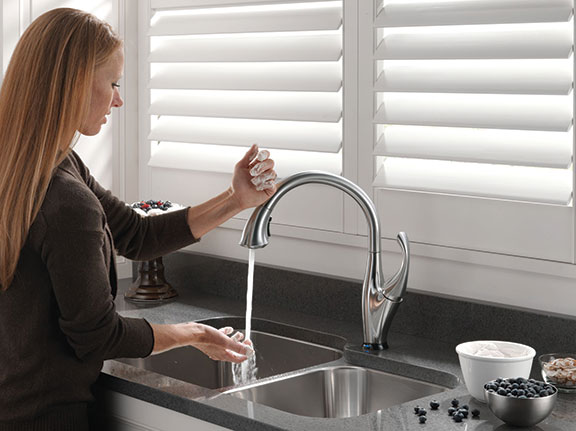The right kitchen faucet can have a strong impact on your water and energy savings.
Today, one-handle faucets are common, as their size and shape impact water use, but the newest, most efficient models can be controlled by the wave or touch of a hand. By not adjusting a handle, water is not wasted by readjusting the temperature. This provides a lot of savings—especially when washing dishes by hand.
A standard faucet uses more water and energy when washing dishes by hand than running a properly-loaded, efficient dishwasher. With a touch-control faucet, hand-washing dishes can be more efficient than a dishwasher. Also, fewer germs are spread because the faucet is touched less often with dirty hands, and the attractive finish lasts longer.
There are two “no-hands” models. One senses touch from your body (hand, forearm, elbow). For example, when rinsing dishes, you can hold several plates in each hand and tap anywhere on the faucet with your arm to control the water flow.
The other model has a sensor on top (a hand-wave controls it), and another on the faucet neck that triggers when your hands are in hand-washing position.
Tall faucet spouts with a pull-down sprayer are also efficient. Depending on under-cabinet clearance, pick the tallest that fits, as the height is handy when rinsing a large pot. Choosing one with a pause button also lets you temporarily stop the flow without waving or touching the fixture.
Whichever faucet you have, never ignore a dripping one, since even a slow leak increases energy costs. After heating and cooling, heating water is the greatest energy user, but cold water also uses a lot of energy to purify, pump and treat.
Companies offering touch-control faucets include:
American Standard, 800-442-1902
Delta Faucet, 800-345-335
Kohler, 800-456-4537
Moen, 800-289-6636
Pfister, 800-732-8238



Leave A Comment